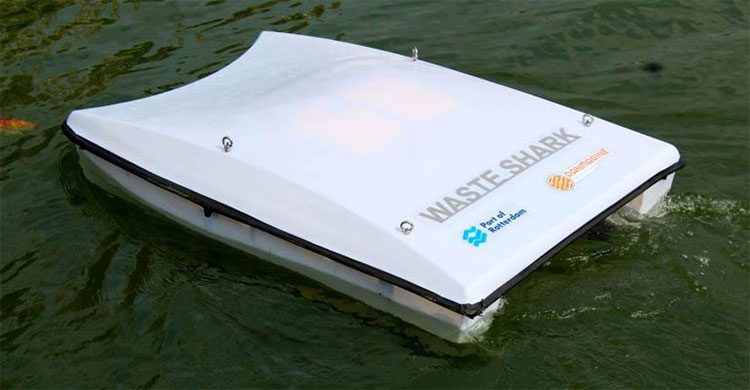Rivers filled with household waste have long been a topic of concern for many countries. To address this issue, a British environmental company led by Richard Hardiman has devised a model known as the Waste Shark, aimed at cleaning rivers and preventing plastic waste from flowing into the sea.
Weighing 38 kg, measuring 1.5 meters in length and 0.9 meters in width, the Waste Shark can operate continuously for 16 hours, capable of collecting nearly half a ton of waste on a single battery charge.
Richard Hardiman first came up with the idea for a water-cleaning robot after witnessing two men struggling with a boat to collect trash from the riverbed in Cape Town, South Africa, his hometown. Small pieces of leaves and plastic bottles were retrieved by hand, but every time they got close to the boat, the wind blew everything away…
To him, this manual work seemed highly inefficient. He suddenly thought that if there were a machine with an opening mechanism resembling a shark’s mouth, which could automatically suck in waste from the water, the effectiveness would be vastly improved. Acting on this idea, Richard Hardiman and his colleagues at Ran Marine created the Waste Shark robot.
“I liken it to a container that collects water. It is an automated machine that sucks pollutants from the water’s surface. These pollutants can be plastic or any debris or biomass, such as algae,” Richard Hardiman shared.

Waste Shark.
The types of waste the Waste Shark can collect include plastic bottles, packaging, and even small aquatic plants that hinder water flow, such as duckweed or small water hyacinths. Users can operate the Waste Shark via a remote control or iPad, thanks to its GPS navigation system.
Additionally, the Waste Shark is equipped with a collision avoidance system that uses lasers to estimate the size of objects in its path, allowing it to calculate the most efficient route.
The Waste Shark is currently in its final development stages at Dubai Marina, an artificial city, after being tested in the Netherlands last year.
“We drew inspiration from nature to create a robot that mimics animals capable of swimming and consuming prey in the most cost-effective yet efficient manner,” explained Oliver Cunningham, founder of RanMarine.
Moreover, the Waste Shark is fitted with sensors to measure depth, salinity, temperature, chemical components, and pH levels of rivers and streams, providing valuable data for scientists.
The company also assures that the device will not harm aquatic life, such as fish, shrimp, or birds that rely on the water environment.
With 8 million tons of plastic waste entering the oceans each year, mostly swept from cities into the sea via rivers, Richard Hardiman expressed his “wish to implement this waste-collecting solution worldwide to restore the beauty of rivers.”



















































